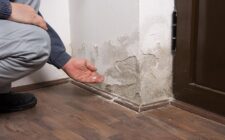Renovating your home is exciting, but it can also feel overwhelming especially when you want to make it eco-friendly. Many homeowners in Cambridge now want to create spaces that are not only stylish and comfortable but also kind to the environment. From reducing energy bills to using sustainable materials, an eco-friendly approach can make a real difference to both your lifestyle and the planet.
This guide will take you through a comprehensive house renovation in Cambridge, focusing on practical steps and environmentally conscious choices. Whether you’re updating a single room or planning a full-scale renovation, these tips will help you achieve a home that is sustainable, efficient, and beautiful.
Why Choose an Eco-Friendly House Renovation?
Eco-friendly renovations are more than just a trend. They offer long-term benefits, including:
- Lower energy bills through efficient insulation and appliances
- Reduced environmental impact by using sustainable materials
- Healthier living spaces with better air quality and natural materials
- Increased property value as eco-conscious buyers seek sustainable homes
Investing in a green renovation not only improves your home but also contributes to a cleaner, more sustainable Cambridge.
Understanding Eco-Friendly Renovation
Eco-friendly renovation is more than just a trend or a box to tick it but ’s a mindset. It involves thinking carefully about every aspect of your home like how it uses energy, how it consumes resources, and how it impacts your health and the environment.
Adopting a green approach doesn’t mean you have to compromise on comfort or style. On the contrary, eco-friendly renovations often result in brighter, healthier, and more functional homes. Simple choices like switching to low-energy lighting, using sustainably sourced materials, or improving insulation can have a significant impact.
By focusing on sustainability from the start, you can reduce your carbon footprint, cut long-term costs, and even increase the value of your property. In short, an eco-friendly renovation is an investment in your home, your family, and the future of Cambridge.
Step 1: Plan Your Renovation Carefully
Planning is key to any successful renovation.
Start by:
- Assessing your current home layout and energy efficiency
- Listing the areas that need renovation: kitchen, bathroom, insulation, etc.
- Setting a realistic budget for eco-friendly upgrades
- Prioritising improvements with the most environmental and financial impact
Tip: Work with a house renovation Cambridge professional experienced in sustainable projects. They can guide you on materials, energy-saving options, and local building regulations.
Step 2: Choose Sustainable Materials
Using sustainable materials is central to an eco-friendly renovation.
Consider:
- Timber from certified sources (FSC or PEFC) for flooring or furniture
- Low-VOC paints and finishes to improve indoor air quality
- Recycled or reclaimed materials for countertops, tiles, and fixtures
- Eco-friendly insulation like sheep’s wool, hemp, or cellulose
These materials are durable, better for the environment, and can make your home feel fresh and natural.
Step 3: Focus on Energy Efficiency
Energy efficiency is one of the most impactful ways to reduce your carbon footprint. Key areas include:
- Insulation: Upgrade lofts, walls, and floors to keep heat in during winter
- Windows and doors: Install double or triple-glazed units to prevent heat loss
- Heating systems: Consider heat pumps or energy-efficient boilers
- Lighting: Switch to LED or smart lighting systems
- Appliances: Choose energy-rated kitchen and laundry equipment
Even small upgrades can make a significant difference in energy consumption over time.
Step 4: Water Conservation Matters
Water efficiency is often overlooked but is crucial for sustainability. Simple steps include:
- Installing low flow taps and showerheads
- Choosing dual-flush toilets
- Harvesting rainwater for garden use
- Using water-efficient dishwashers and washing machines
These measures reduce water bills and preserve a precious natural resource.
Step 5: Embrace Renewable Energy
If your budget allows, renewable energy can transform your home into a self-sufficient space.
Options include:
- Solar panels for electricity or hot water
- Solar water heaters for bathrooms and kitchens
- Small-scale wind turbines, if feasible in your area
Local incentives and grants in Cambridge may help offset installation costs, making renewable energy a practical choice.
Step 6: Create a Healthy Indoor Environment
Eco-friendly homes aren’t just about energy; they’re also about comfort and health. Consider:
- Using natural materials for floors, walls, and furniture
- Maximising natural light with larger windows or skylights
- Adding indoor plants to improve air quality
- Installing ventilation systems that circulate fresh air efficiently
A healthier home makes your renovation worthwhile and enjoyable for years to come.
Step 7: Waste Reduction and Recycling
Renovation can generate a lot of waste, but you can manage it responsibly:
- Donate usable materials to local charities or recycling centres
- Recycle metals, plastics, and glass
- Hire a skip company specialising in sustainable disposal
- Plan renovations to reduce excess material usage
Keeping waste out of landfills is a small change that has a huge environmental impact.
Step 8: Work with Eco-Conscious Professionals
Choosing the right team is vital for a successful eco-friendly renovation:
- Look for builders, architects, and designers with experience in sustainable homes
- Discuss your eco-friendly goals and budget upfront
- Ask for references or case studies of past projects
Collaborating with knowledgeable professionals ensures that your house renovation in Cambridge meets both aesthetic and environmental goals.
Step 9: Monitor and Maintain Sustainability
Once your renovation is complete, continue to maintain a green lifestyle at home:
- Regularly check insulation, heating systems, and appliances
- Monitor energy and water consumption
- Update to newer eco-friendly technologies as they become available
Sustainable living is an ongoing process that maximises your home’s efficiency and comfort.
Conclusion
An eco-friendly house renovation in Cambridge is more than just a home improvement project it’s a long-term investment in comfort, efficiency, and sustainability. By planning carefully, choosing the right materials, focusing on energy and water efficiency, and working with eco-conscious professionals, you can create a home that meets your needs today while caring for the environment tomorrow.
Even small changes, like upgrading insulation, installing water-saving fixtures, or switching to energy-efficient lighting, can have a significant impact over time. A thoughtful, eco-friendly renovation helps reduce your household’s carbon footprint, lowers bills, and creates a healthier living environment for you and your family.
By taking the steps outlined in this guide, your home in Cambridge can be transformed into a beautiful, functional, and sustainable space that stands the test of time.


